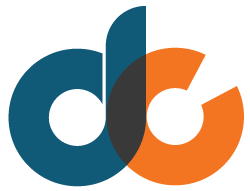What is a Buyer Persona?
Buyer personas are fictional, generalized representations of your ideal customers. They help you understand your customers (and prospective customers) better and make it easier for you to tailor content to the specific needs, behaviors, and concerns of different groups.
The strongest buyer personas are based on market research as well as on insights you gather from your actual customer base (through surveys, interviews, etc.). Depending on your business, you could have as few as one or two personas, or as many as 10 or 20.
How can you use Personas?
At the most basic level, personas allow you to personalize or target your marketing for different segments of your audience. For example, instead of sending the same lead nurturing emails to everyone in your database, you can segment by buyer persona and tailor your messaging according to what you know about those different personas.
When combined with the lifecycle stage (i.e. how far along someone is in your sales cycle), buyer personas also allow you to map out and create highly targeted content. You can segment content for them that focuses on specific factors such as their form of communication, goals, likes/dislikes, and others.

Demographics
Age: 30
Gender: Female
Relationship Status: Married with 1 child
Median Wages: $53k
Years of Experience: 10+
Education Level: Bachelor’s of Arts and Design with Architectural Certification
Personality
Openness to Technology (Closed – Open)

Task Orientation (Big picture – detail-oriented)

Extraversion (Introverted – Extraverted)

Activity (Researcher – Hands-on)

Identifiers
Interests
- Museums, art shows, vendor craft shows
- Volunteer work
- Travel
- Pets
- Family-related activities
- Social networking opportunities
- Creative hobbies (i.e. jewelry design)
- Active lifestyles (i.e. Golfing, biking, running, yoga)
Goals
- Recognition and career advancement
- Obtaining valid information from sources
- Wants to display beauty and style to the user experience
- Requires projects to stay within budget
- Wants to ensure the flooring stands up to years of wear
- Function and utility
Frustrations
- Installation errors and product issues (availability)
- Long lead times and tight schedules
- Lack of dependability and trust
- Lack of respect from Architects, Manufacturers,
- and Sales Reps
- Miscommunication and exaggerated product features
- Unavailability of project samples
Common Objections
- Prefers to work with suppliers she knows and trusts
- No comprehensive brand recognition (poor website)
- Outdated products and little variety in styles
- Few options
Preferred Channels
Communication:
- Text
- Phone
- Face-to-face
Social:
- Website
- Instagram/Facebook
Trusted Brands


